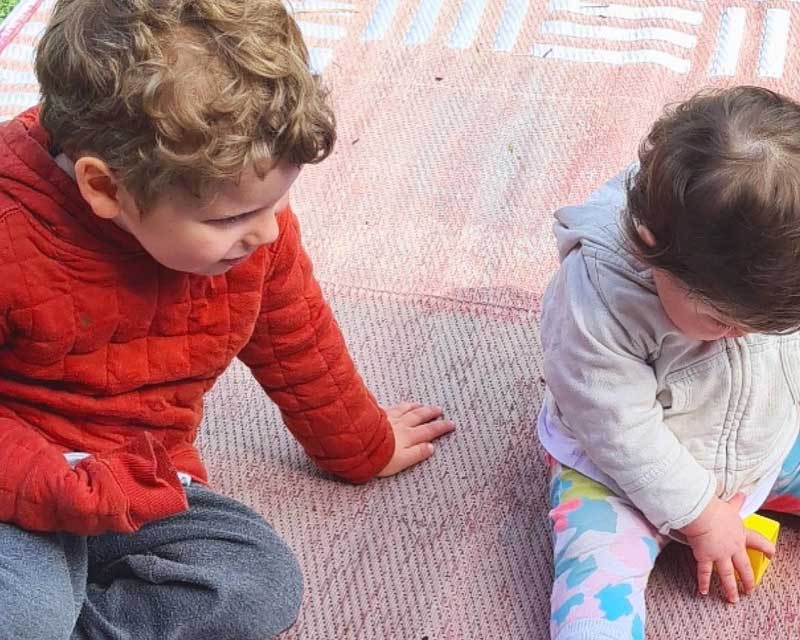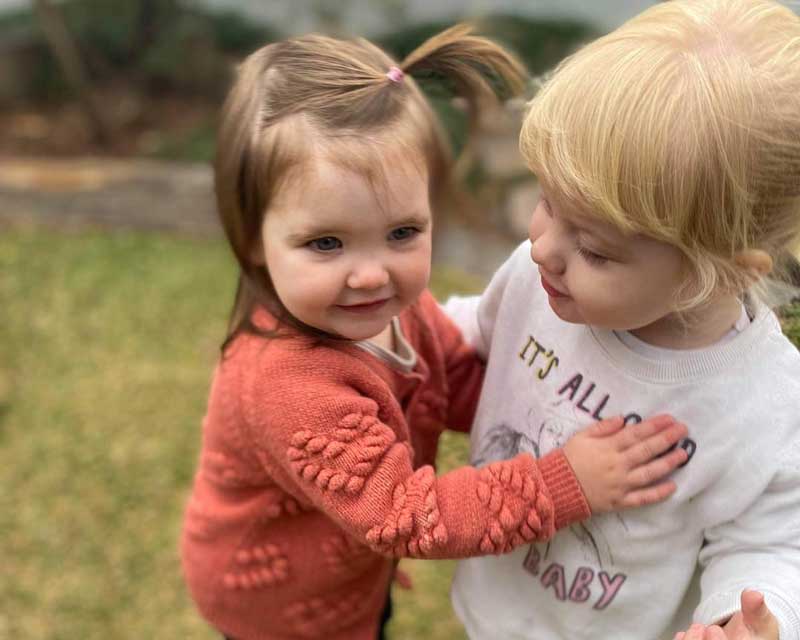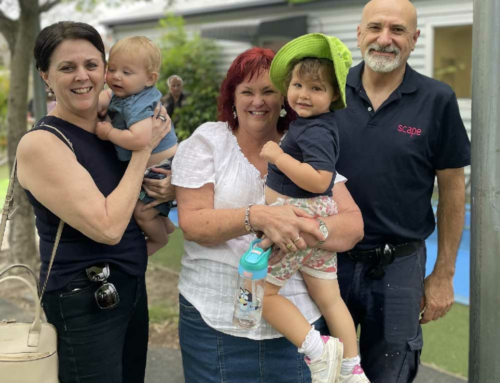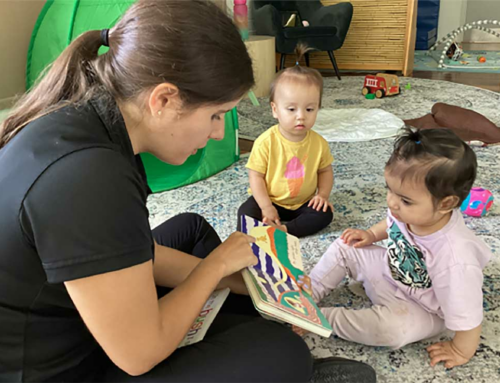A shy baby can be tricky to understand. You may not know what shyness is or how to help a child overcome shyness. However, shyness is a typical trait in children 5 years and under. It is a natural reaction. It allows children to be cautious and feel safe.
Young children may be shy when meeting new people or in unfamiliar situations. They may be shy when their feelings are overwhelmed, such as when a child is afraid or confused. Shy babies spend more time watching than participating.
Shyness can also be a learned behaviour. Families should encourage children to build their confidence by showing them how to be sociable. Shy parents may unintentionally model shy behaviour for their children.
It can be challenging for parents to know how to support their shy baby. As a result, they may avoid social interaction, act nervous and appear frightened. Shy babies may also be less likely to explore new things or seek help.
There are several different signs of shyness to look out for in young children. Below, we’ve listed a few from our experience and reflections, so you can help your baby develop socially. We also touch on:
- Shyness as a normal behaviour in babies.
- Shyness in child development.
- How to help a shy child overcome shyness.
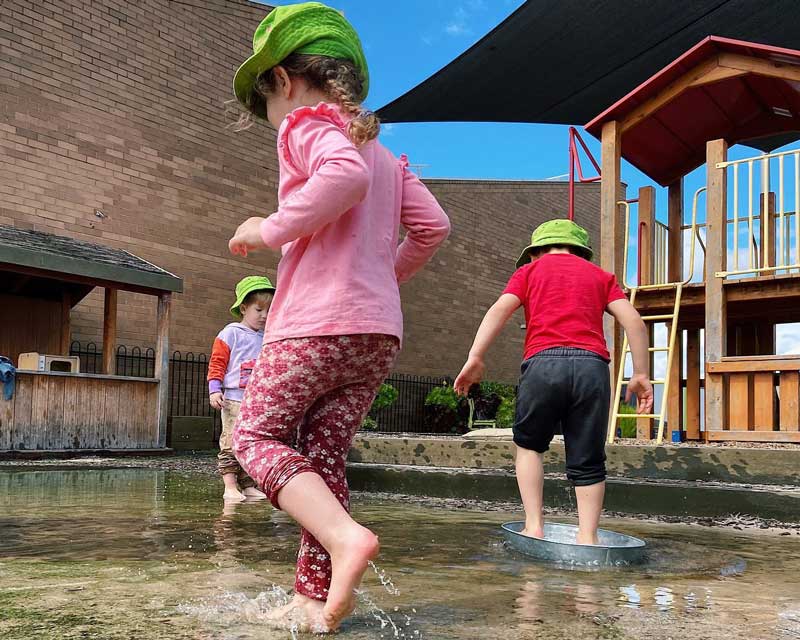
Shy children are normal but may need encouragement
There’s nothing wrong with a shy baby. Shyness in children is a relatively common trait, often attributed to selective socialisation. That’s where you only want to hang out with people who are like you.
While most shy children in their early months prefer to hang out with adults, especially those with familiar faces over new people, some babies tend to be more selective about who they prefer.
If your baby hasn’t bonded as easily as others, don’t worry – they will likely grow out of it. It’s pretty standard for a young baby to play by themselves. As babies get older and become toddlers, they begin to socialise more with other children.
At around two years of age, children begin to watch others playing before joining in with them. If your child is still timid, consider joining a playgroup or an early childhood education and care service. The social interaction your child gains will:
- Help them feel more comfortable around other people.
- Make it easier for your child to learn how to communicate.
- Build their confidence.
- Watch and learn from you interacting with other people.
- Encourage physical literacy.
- Support play-based learning.
- Inspire their imagination and creativity.
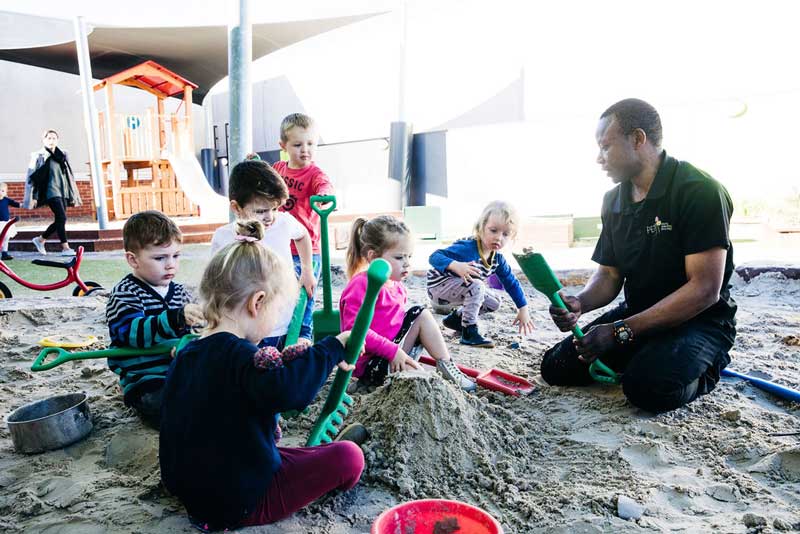
Shyness in child development and play
Mildred Parten, a researcher in children’s play, identified six stages of play often associated with shyness in child development. The first three stages develop before the age of two, with the last three stages beginning around the age of two.
- Unoccupied play.
- Solitary play.
- Onlooker play.
- Parallel play.
- Associative play.
- Cooperative play.
It’s easy to misinterpret the characteristics of stages 1-3 as shyness in children.
Further research concluded the stages do not form a sequence. Instead, stages 4 to 6 can emerge around the same time as parallel play. Parallel play is where children play alongside each other.
Parallel play is normal for many children because it is a form of ‘practising’ social skills. Toddlers will often engage in parallel play with siblings or other family members. However, it’s less common in preschool years.
Associative play is where children start to include each other in their games. This stage is when they will begin playing alongside one another instead of next to one another. During associative play, children are more relaxed and open with each other.
Cooperative Play is when children are not only including but working together towards a common goal. It’s more common in children after the age of three. An example of cooperative play is where children build a sandcastle and learn together through play.
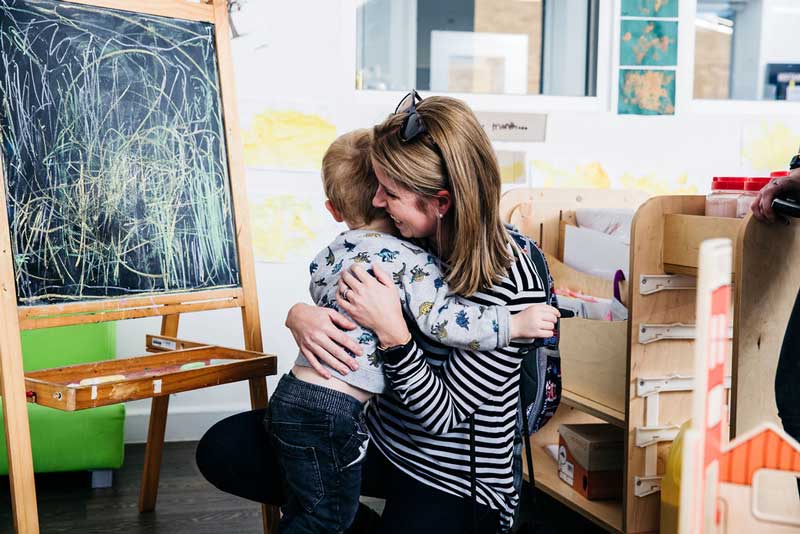
12 Signs of shy babies
If you’re worried about your baby’s shyness, look for some of these twelve signs. While every child is different, it might be worth seeking help if they exhibit these characteristics. Remember though; all children develop at their own pace.
So while some babies may show some of these early indicators of shyness, they may grow out of them. Whenever you feel concerned about your child’s development, you should discuss it with your child’s Educator or family doctor.
One of our six core beliefs focuses on Educators partnering with families. If you’re concerned about your shy baby or toddler we can help you by providing them with a sense of security and belonging. We can also record and share observations about your child’s behaviour.
Some of the behavioural signs we can look out for include:
- Avoiding or refusing new people or experiences (socially inhibited behaviour).
- Showing signs of anxiety when separated from their families or in new or unfamiliar situations (separation anxiety).
- Shrinking from others’ attention (hostility towards strangers).
- Being upset by changes in routine (comfort with familiarity).
- A fear of making mistakes in public (sensitivity to criticism).
- Showing signs of boredom when not with their parent (intolerance to aloneness).
- Tearfulness when surrounded by unfamiliar people (emotional lability).
- Overwhelmed when in new or noisy environments (sensitivity to sensory stimuli).
- Showing signs of hostility towards an adult (aggressive behaviour).
- Prone to negative moods (negative affectivity).
- Hiding behind their family member or carer (avoidance of novelty).
- Not showing an interest in other children (lack of sociability).
Our Educators can also connect families with community services who can provide additional support for their shy baby.
How to help a shy child
There are several things you can do to encourage your shy baby’s social development. It’s important to remember that every child is different, so what works for one might not work for another. Be patient, loving and kind.
If you’re concerned about your child’s shyness, you can:
- Help them to engage with others by showing them how to socialise.
- Encourage them to socialise with other children both in and outside their early childhood education and care setting.
- When taking your shy child out, talk to them about who will be there and what to expect. Your child may feel more comfortable by having some idea of what to expect.
- Have your child start play dates with other children their age.
- Give your child the time to adjust to change and new experiences, and reassure them everything will be okay.
- Talk to your shy baby about how you are feeling and how you are putting yourself out there.
- Introduce your child to trusted family and friends they can rely on to create opportunities for positive interactions with you and your child.
- Give your child time to play with other children on their own terms.
- Attend local events either at your early childhood education and care service or out in the greater community. Make new community connections.
- Talk to your child’s Educator about how they can partner with you and your child.
- Let them see you interacting with others in front of them, so they see how easy going it can be between individuals.
- Make time for one-on-one interactions without interruptions from siblings or anyone else who might get in the way of a good conversation with your shy child.
- Connect safely online together with family, friends and other children’s groups.
- Reinforce the idea that everyone makes mistakes, and if they don’t succeed at something one time, there is always next time.
While most children will grow out of it, seek professional support for severe cases of shyness in children. Your child’s Educator can help connect you with additional community support. Alternatively, your families GP may be able to provide a referral.
Finally, it’s important to note that all babies are different. For example, some children will take longer than others to develop basic social skills such as eye contact and gestures.
When trying any new opportunity, be sure not to push too hard; babies learn best when things happen naturally rather than under pressure.

Support your shy baby by partnering with Petit Early Learning Journey
Petit ELJ’s Educators are experts when supporting shy children overcome their fears. We welcome and encourage families to partner with us in their child’s learning journey. Your input and involvement in our services is important to us and for your child’s development.
We empower parents to be the decision-makers in our quest to provide the best care, support and learning for their child. Our open door policy and community involvement and support promote children’s and families’ sense of belonging. Learn more about how we can support you and your child.
